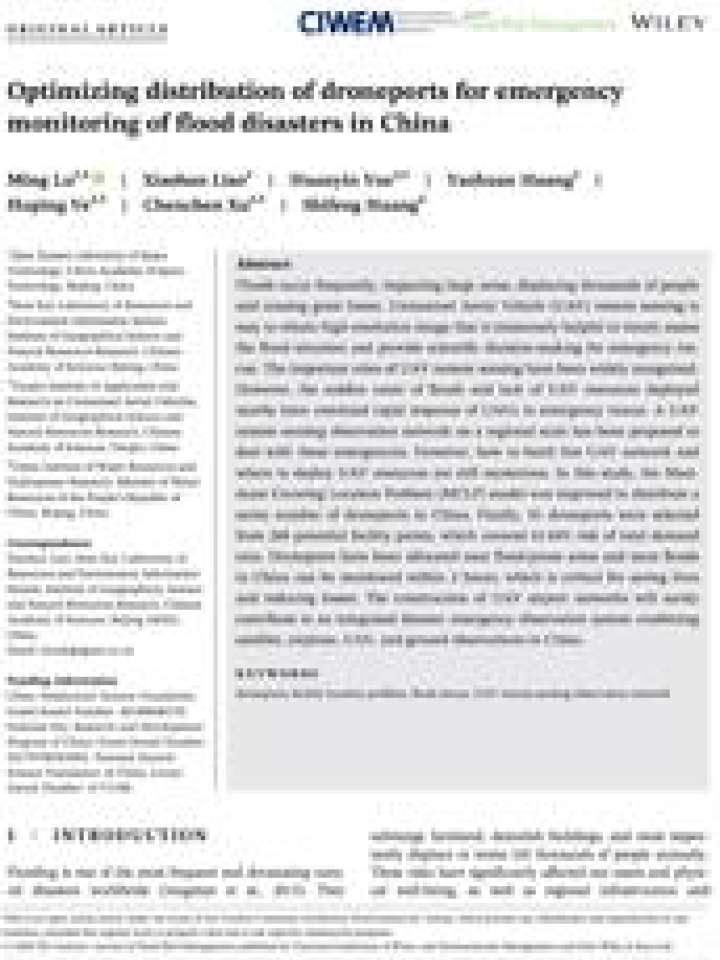Optimizing distribution of droneports for emergency monitoring of flood disasters in China
Floods occur frequently, impacting large areas, displacing thousands of people and causing great losses. Unmanned Aerial Vehicle (UAV) remote sensing is easy to obtain high‐resolution image that is immensely helpful to timely assess the flood situation and provide scientific decision‐making for emergency rescue. The important roles of UAV remote sensing have been widely recognized. However, the sudden onset of floods and lack of UAV resources deployed nearby have restricted rapid response of UAVs in emergency rescue. A UAV remote sensing observation network on a regional scale has been proposed to deal with these emergencies. However, how to build this UAV network and where to deploy UAV resources are still mysterious. In this study, the Maximum Covering Location Problem (MCLP) model was improved to distribute a series number of droneports in China. Finally, 81 droneports were selected from 268 potential facility points, which covered 61.84% risk of total demand area. Droneports have been allocated near flood‐prone areas and most floods in China can be monitored within 2 hours, which is critical for saving lives and reducing losses. The construction of UAV airport networks will surely contribute to an integrated disaster emergency observation system combining satellite, airplane, UAV, and ground observations in China.
Explore further

